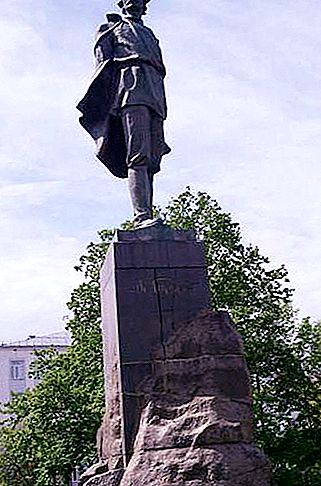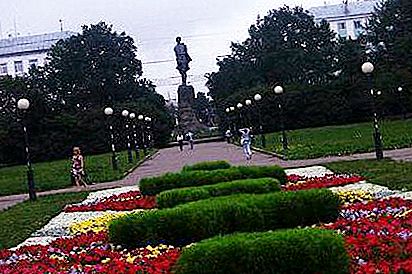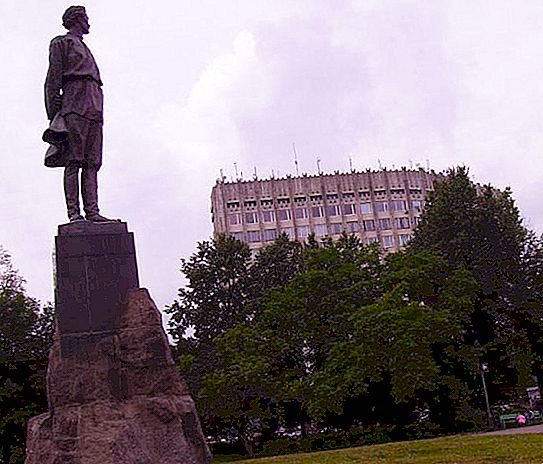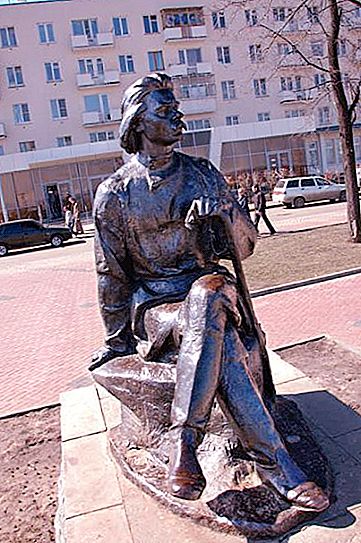Any, even the most remote corner of our country is rich in its history. Particularly interesting are the places visited by poets, artists, writers, other famous people who have done a lot for the development of the country, its culture. People carefully preserve their history: house-museums, sculptures, the names of parks and streets remind us of figures whose heritage will survive centuries. Nizhny Novgorod is no exception, and one of the evidence of this is a monument to Maxim Gorky, the proletarian writer. Get to know him in more detail.
Nizhny Novgorod: Monument to Maxim Gorky
The real name of the writer is Alexey Maksimovich Peshkov. He lived in his small homeland for 26 years. Therefore, the monument to Maxim Gorky is not alone. There are several sculptures - at the house of Kashirin, in the park zone of Kulibin, on the embankment of Fedorovsky and Gorky Square, the latter is considered one of the most famous.

In the square, which received the name of the writer, there is a monument to Maxim Gorky (Nizhny Novgorod), whose history began a long time ago. The USSR competition project for the installation of the monument was proposed in 1939. But the war did not allow it to be realized. After its completion, the square was rebuilt in a beautiful square, reconstructed, and in November 1952 a significant event took place - the opening of the monument. Its creator was the sculptor V.I. Mukhina. It is cast from bronze at the Monument Sculpture enterprise (Leningrad). In height, it reaches seven meters.
Description of the sculpture
Gorky's silhouette is visible from afar, it rises above the houses on a quadrangular base, which rises from the cliff. This is a writer in his youth, who lived in his hometown and created the “Song of the Petrel”. The wind waves a cloak thrown over a bust. His hands are folded behind his back, his face is exposed to a stream of wind, which indicates his inner troubled state. He looks into the distance and, probably, reflects on the future of Russia, about the new young generation. The monument evokes vivid emotions with its power and strength. They come from the appearance of a real person. The city of Nizhny Novgorod, a monument to Maxim Gorky - these are the historical pages of Russia.
The unique creation of human hands
Monument to Maxim Gorky, the sights of the city are pages of a fascinating chronicle.

This is not the central square, but the main traffic intersection. But still, not a single tourist will bypass the monument with his attention, visiting Nizhny Novgorod. The monument to Maxim Gorky is listed as 12 significant works of monumental art. It belongs to the cultural heritage of Russian and local significance. And now he stands, towering above his native places with his head proudly raised. So he will be remembered by the inhabitants of Novgorod.
Tourist impressions
That's how in this picture, from the point of view of city guests, Nizhny Novgorod, a monument to Maxim Gorky in particular, looks like.

What do tourists write? They say that this is a sculpture of the Soviet stage of the city’s life. It looks thoroughly on the square among the greenery. This is one of the corners of Nizhny Novgorod that is worth a visit.
City guests believe that Gorky’s lively and interesting composition has turned out and looks more thorough than on Fedorovsky Street.
Travelers say they are very impressed with the writer "in bronze." It is good that Gorky was shown not as an experienced, knowledgeable person, but as a young man, only starting his way and opening the doors to the world.
About the monument they say that this is a memorable sculpture in the vein of socialist realism. Both the Soviet revolutionary writer and that era are fragments of our Russian reality. The monument is located in a prominent place. In winter, it looks especially stately, as befits a great writer. Although a small square in the historical center is not very well-groomed, still, in general, it evokes positive emotions.
The visitors of the city are impressed by the monument, which was created by the sculptor Mukhin, it has both charisma and recognizable features of the proletarian writer. A well-chosen place allows you to consider all the details.
Sculpture on the waterfront
There is a monument to Maxim Gorky in Nizhny Novgorod on Fedorovsky Embankment.

The sculptor I.P. cast it Shmagun from bronze. Here the writer is thoughtful, sitting on a rocky slope and looking at the surroundings. He holds his famous cane in his hands and watches the smooth flow of the Oka and Volga.
At the beginning, it was planned to create another monument, V.I. also designed it. Mukhina. However, they used the layout presented at the exhibition. In 1972, he was transferred to the embankment.
Monument in the Kulibin Park dismantled
Kulibin Park, opened in 1940, is located in the place where the cemetery used to be. But two have survived from the graves. One of them belongs to Alexei’s grandmother - Akulina Ivanovna Kashirina. In 1960, a memorial sign was erected on her grave. The monument to Maxim Gorky (Nizhny Novgorod), the administration sets in the same park. Its author is sculptor A.V. Kikin. It was set in the central part of the park, all paths led to it.
In 2002, the Department of Culture issued a decree on the dismantling of the sculpture. It was created from gypsum concrete - a rapidly decaying material. It was in connection with the possibility of damage to the monument in the open air, it was decided to remove it. In addition, he was not subject to state protection. The current fate and location of the sculpture is unknown.




